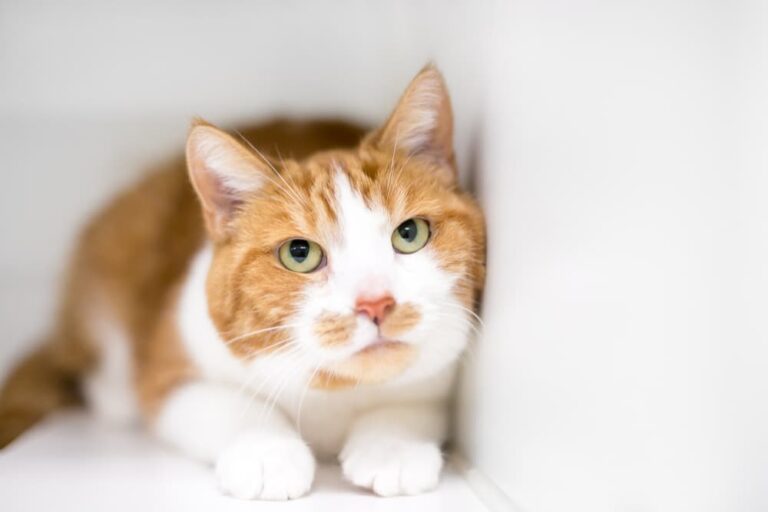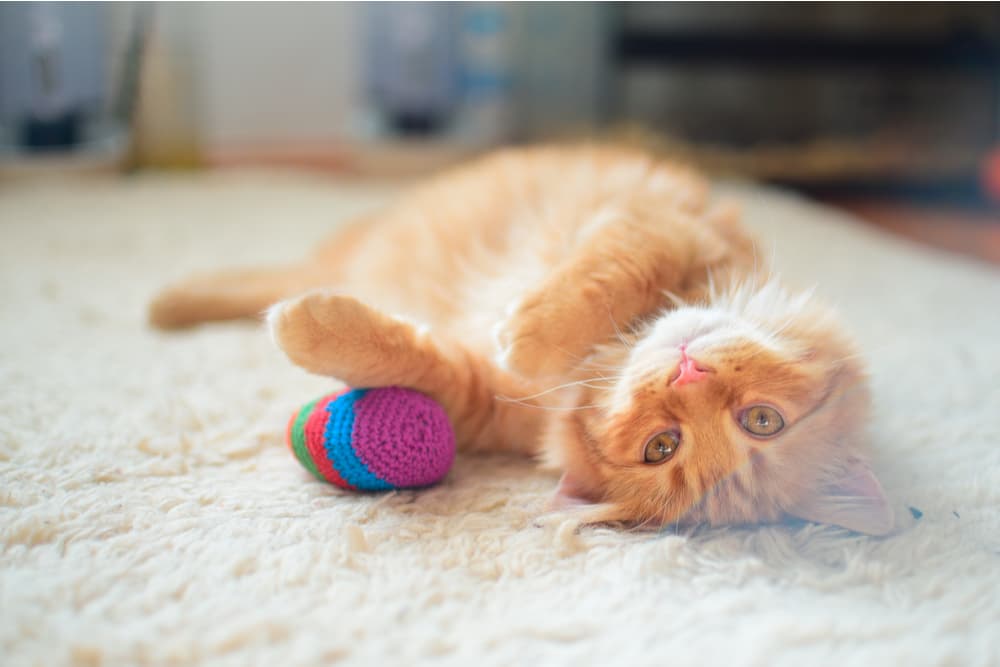Megacolon in Cats

Overview
- In cats with megacolon, the colon becomes larger or more distended than it should be.
- Over 60 percent of cases of megacolon are idiopathic, meaning the underlying cause is unknown.
- Once megacolon occurs, it is lifelong—not temporary like constipation.
- The most common way that veterinarians diagnose megacolon in cats is through X-rays.
- Megacolon is seen more often in cats that are stressed in the home.
Megacolon is a common condition in cats that is very uncomfortable. These poor kitties cannot defecate, or poop, for several days. The majority of cats diagnosed with megacolon are male (70 percent), and megacolon usually occurs in middle-aged cats with an average of 6 years old.
Catching this condition early can limit how severe it gets. Because of this, every pet parent should read the following to understand more about the symptoms of megacolon in cats and how to get their cat help.
What is a Megacolon?

Megacolon is a relatively common condition in cats (but uncommon in dogs). The term megacolon means a large colon. A cat’s colon is located at the end of the intestines where feces is made before passing out of the body.
In cats with megacolon, the colon becomes larger or more distended than it should be. This slows down the passing of feces out and results in constipation, or the decreased ability to defecate. Many times, the feces becomes very firm, dry, and large when it does not pass out of the body. This is intensely uncomfortable for cats. In some cases, complete and severe constipation—known as obstipation—occurs.
This is a serious condition that requires a veterinarian to help your cat. It could be life threatening if your cat becomes so sick that he refuses to eat and becomes severely dehydrated.
What Causes Megacolon in Cats?

Over 60 percent of cases of megacolon are idiopathic, meaning the underlying cause is unknown. The smooth muscle in the colon that is responsible for pushing feces out does not function as well anymore. Oftentimes, multiple bouts of constipation occur first, stretching the colon even wider and damaging the inner layers of the colon important to a cat’s digestion and gut health.
While most cases of megacolon are found in mixed breed cats (61 percent), approximately 12 percent of cases are in purebred Siamese cats. Therefore, it is possible that genetics has something to do with this condition.
There are multiple other possible causes for megacolon in cats including:
A blockage: A physical issue blocking the passage of feces out of the colon. Examples include a foreign object, previous fractures of the pelvis (hip), or a cancerous mass.
Nerve problems: An issue with the nerves that are supposed to help control the colon’s function. Examples include an issue in the spinal cord or a congenital issue, meaning the cat was born with a lack of appropriate nerves to the colon.
Congenital hypothyroidism. This is rare, but cats born with hypothyroidism, or low thyroid hormone, may have stunted growth and other health issues on top of megacolon.
Symptoms of Megacolon in Cats

The symptoms of megacolon in cats are essentially the same as for constipation, but they are more severe and longer lasting. Once megacolon occurs, it is lifelong—not temporary like constipation.
The symptoms of megacolon include:
- Decreased or no feces produced – may see very small very firm pieces of feces
- Not using the litter box
- Straining to defecate (standing and pushing as though trying to pass feces)
- Vomiting
- Distended belly (increased in how round it is even when not eating well)
- Blood or mucus from the anus
- Decreased or no appetite
- Decreased activity level
Cats with megacolon can sometimes also have liquid diarrhea, which confuses pet parents. This can be because the inner lining of the colon is so inflamed and irritated that it produces diarrhea, which leaks around the large, firm feces stuck inside.
Diagnosing Megacolon in Cats

The most common way that veterinarians diagnose megacolon in cats is through X-rays. Your veterinarian will examine your cat and feel large, firm feces stuck inside. On an X-ray, veterinarians can look for underlying causes for megacolon as well as measure the size of the colon. If the colon is not too large, your cat may just be constipated. But if his colon is very distended and abnormally large, your veterinarian will diagnose megacolon.
Bloodwork is often a good test to run when your cat is first found to be constipated. Sometimes underlying issues (such as kidney disease) cause dehydration (lack of water), which can lead to constipation. In rare cases, young kittens are born with low thyroid levels and bloodwork is the only way to measure that.
Occasionally more advanced testing will be recommended for megacolon. This can include a colonoscopy, which allows veterinarians to look for abnormalities in the colon with a small camera. Biopsies (small samples) can be taken to analyze for cancer, nerve issues, and other damage to the colon.
How to Treat Feline Megacolon

When your cat is severely constipated (especially if he’s obstipated) an enema is a required treatment. An enema involves putting your cat under anesthesia for a short time to place lubricating liquids into the colon. These liquids will help your veterinarian remove some of the feces as well as help your cat pass feces by himself later on.
There are several ways to manage megacolon long-term, which include:
- Medications to stimulate movement of the colon to pass feces
- Laxatives to make it easier to pass stool
- Increased water consumption (feeding canned food or giving your cat a drinking fountain)
- Increased fiber in food such as psyllium or wheat bran
- Prescription diets that have increased fiber for gut health
- Probiotics to support general gut health
- Acupuncture
Depending on your cat’s specific case, sometimes surgery to remove a mass is required. Some cats will not respond to medications and, for his long-term happiness, surgery is recommended. The surgery of choice for megacolon is called subtotal colectomy, which involves the removal of most of the colon to keep feces from getting stuck there. This surgery has a high success rate.
Medications for Megacolon in Cats
Medications to help treat megacolon in cats may include:
- Prokinetic medications that stimulate movement of feces out of the colon, such as Cisapride
- Laxatives that make stool softer, such as Polyethylene glycol or lactulose
- Probiotics that support gut health
General Cost to Treat Megacolon
The cost of treating megacolon varies significantly depending on your geographic location and the severity of the condition.
If your cat is having an episode of constipation for the first time, your veterinarian may only charge for general treatments. If your cat has evidence of megacolon or repeated constipation, your veterinarian will run several tests and provide several treatments to make your cat better. These tests and treatments are estimated in the $400-$600 range.
If your cat is obstipated and requires an enema, add an estimated $300-$600 on top of the $400-$600.
How to Prevent Megacolon in Cats

Megacolon is seen more often in cats that are stressed in the home or that do not have litter boxes regularly cleaned.
In order to help prevent megacolon:
Make sure your cat has access to fresh water. Provide plenty of fresh water and canned food to increase water consumption.
Keep your cat happy and stimulated. Provide essential environmental enrichment for your cat to limit stress and stimulate his brain and activity level.
Keep your cat’s litter box clean. Scoop all of your cat’s litter boxes every day, and empty and thoroughly clean the litter boxes at least every 2-3 months.
Call your veterinarian right away if your cat is constipated (not producing stool) for over 48 hours. Long-term constipation can lead to megacolon.
Related Conditions
- Constipation
- Obstipation









